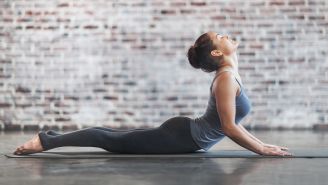Updated on October 25, 2022.
Whether your goal is to find a little inner peace, tone your muscles, or simply get more flexible, there's a perfect-for-you yoga class out there.
For starters, there are three main things to consider when choosing a yoga class:
The venue
Swanky studios and barns, round-the-clock gyms, martial arts studios, and even community centers and local churches have caught on to the yoga movement. Take a little time to figure out what you do—and don't—want from your venue.
If you don't mind mirrors all around, you might enjoy the gym setting or a swanky yoga studio. These venues also often provide mats and props like blocks and bolsters, whereas you’d likely need to bring your own to a community center or local church-type setting. On a serious budget? Studios devoted to yoga may not be the best bet when things are tight. But no matter which venue you're leaning toward, always ask if you can try out a class for free before you commit.
The style
There are so many forms of yoga out there. The best one to choose depends on what you're looking for. Use this guide to help you find your match.
Hatha: This is an umbrella term used for any form of the physical postures (called asanas) of yoga. A class that labels itself "hatha" usually focuses on basic and more gentle poses combined with mindful breathing practices. This style is great for newbies.
Ashtanga vinyasa/power yoga: Ashtanga is a more physically demanding form of yoga, filled with many sun salutations and body-weight-bearing exercises done at a pretty fast rate (vinyasa means "flow"). This makes this form great for athletes. Power yoga is like Ashtanga but is geared more toward those looking to build lean muscle mass and a strong core without the more mental aspects of yoga.
Anusara: Anusara promotes proper joint alignment and muscle support within each pose along with the more meditative aspects of yoga. Anusara is an excellent choice for both new yogis and those seeking a less strenuous practice.
Kundalini: Translated to “coiled snake”, Kundalini relies on lots of repetitions and steady breath work to promote a sense of enlightenment and ease within the body. This is a wonderful class for those who wish to lose weight or who don't like doing the same old thing in every class.
Iyengar: This style is all about joint alignment, sequencing, and timing. Instructors teach you to use props—such as blocks, blankets, straps, and bolsters—to help you get into perfect position and minimize your risk of injury. This is just the thing for people who have joint issues or who are recovering from injury.
Bikram/hot yoga: Both are done in heated rooms kept at between 105°F and 108°F, so you need to really like heat to thrive. In Bikram you do the same 26 poses in every class. In hot yoga, the poses change depending on the teacher and general mood. These classes are great for people seeking to drop pounds or who are dealing with chronic tight muscles, as heat is a powerful muscle loosener. Some people should not do hot yoga, especially if they have certain pre-existing conditions, such as heart disease or a history of heatstroke or other heat-related issues. If you feel woozy or ill during hot yoga, stop right away.
The instructor
These days, it seems like practically anyone can call themselves a yoga teacher. Don't be fooled. Search for someone who has been certified by the Yoga Alliance. They regulate teacher training and offer continuing education for certified yoga teachers. Look up instructors at the Yoga Alliance website or ask for proof of certification before you commit to a class. Beyond that, opt for someone whose style—hands-on or -off, talkative or not, using background music or preferring quiet, etc.—you feel comfortable with.
Wherever you end up, consider this last piece of advice: Leave self-judgment and the quest for perfection at the door when you arrive. Remember, yoga is a journey—and each step of the way is meant to be enjoyed, whether you are just starting out or have several years of experience under your waistband.







